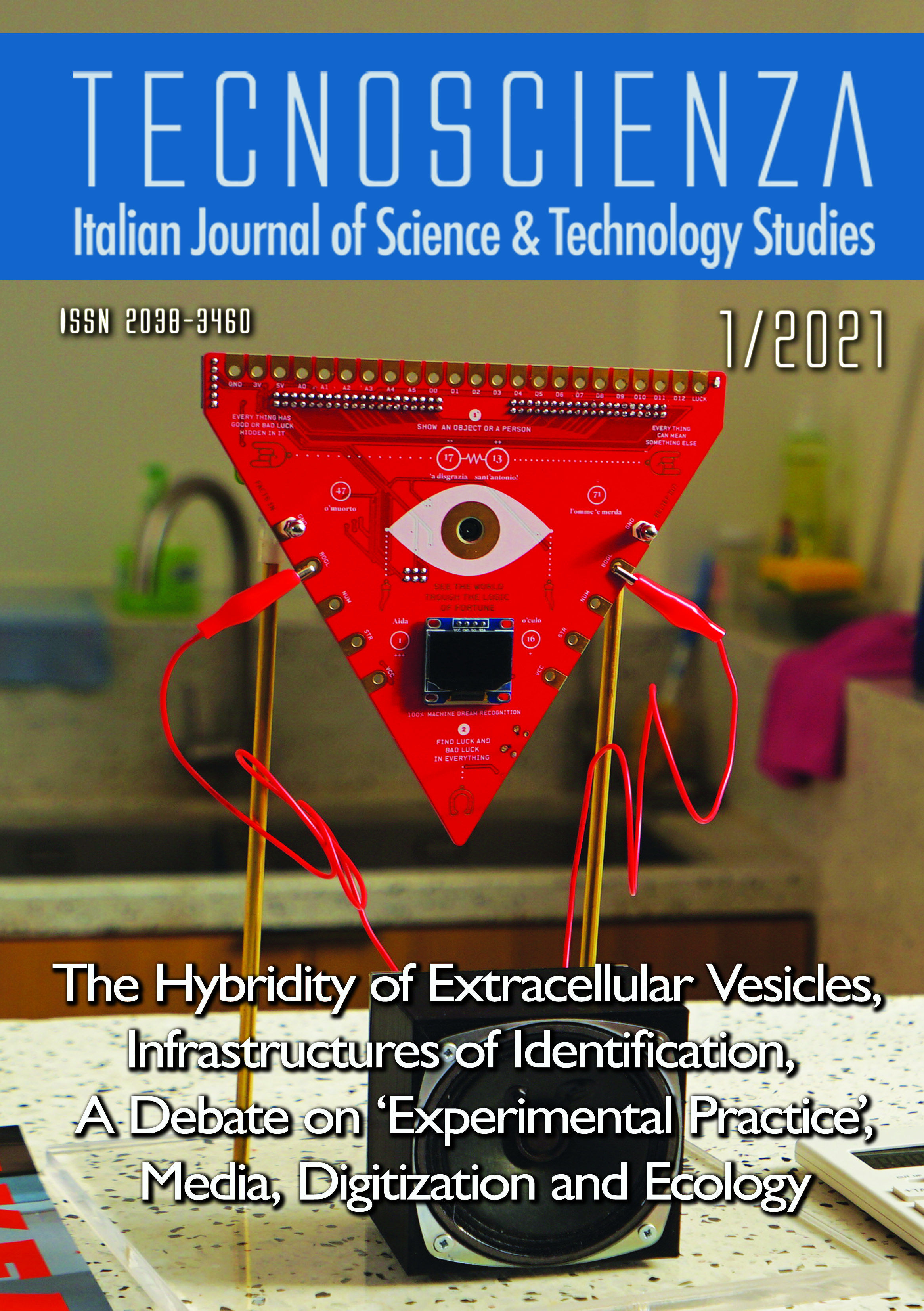The Extracellular Vesicles as a Hybrid: Life Science and its Object
DOI:
https://doi.org/10.6092/issn.2038-3460/17494Keywords:
life sciences, objects of science, hybrid science, commercial collaboration, biomedical R&DAbstract
Extracellular vesicles (EVs) are incredibly small vesicles found in the fluids of the body. Released by cells, they circulate in the body and carry different kinds of molecules as cargo; consequently, they are understood to play a significant role in cell-to-cell communication and are expected to offer potential as biomarkers and agents of drug delivery. The scientific work on them in molecular biology and biomedicine is cutting-edge, connecting production of new knowledge with expectations of new clinical applications and biotech products. This article is a case study of biomedical research-and-development collaboration on EVs in Finland. The subject of the article is the hybridity of EVs as an R&D object that is simultaneously thought of and enacted as an “epistemic thing” and a “technical object” (Rheinberger, 1997). In this context, EVs are a potential clinical tool, commercial product, and vehicle for upholding the continuity of research. The article argues that this kind of hybridization of research objects characterizes the practice of current life science and is closely linked to or even derived from the expectations attached to life science and biomedical research.





